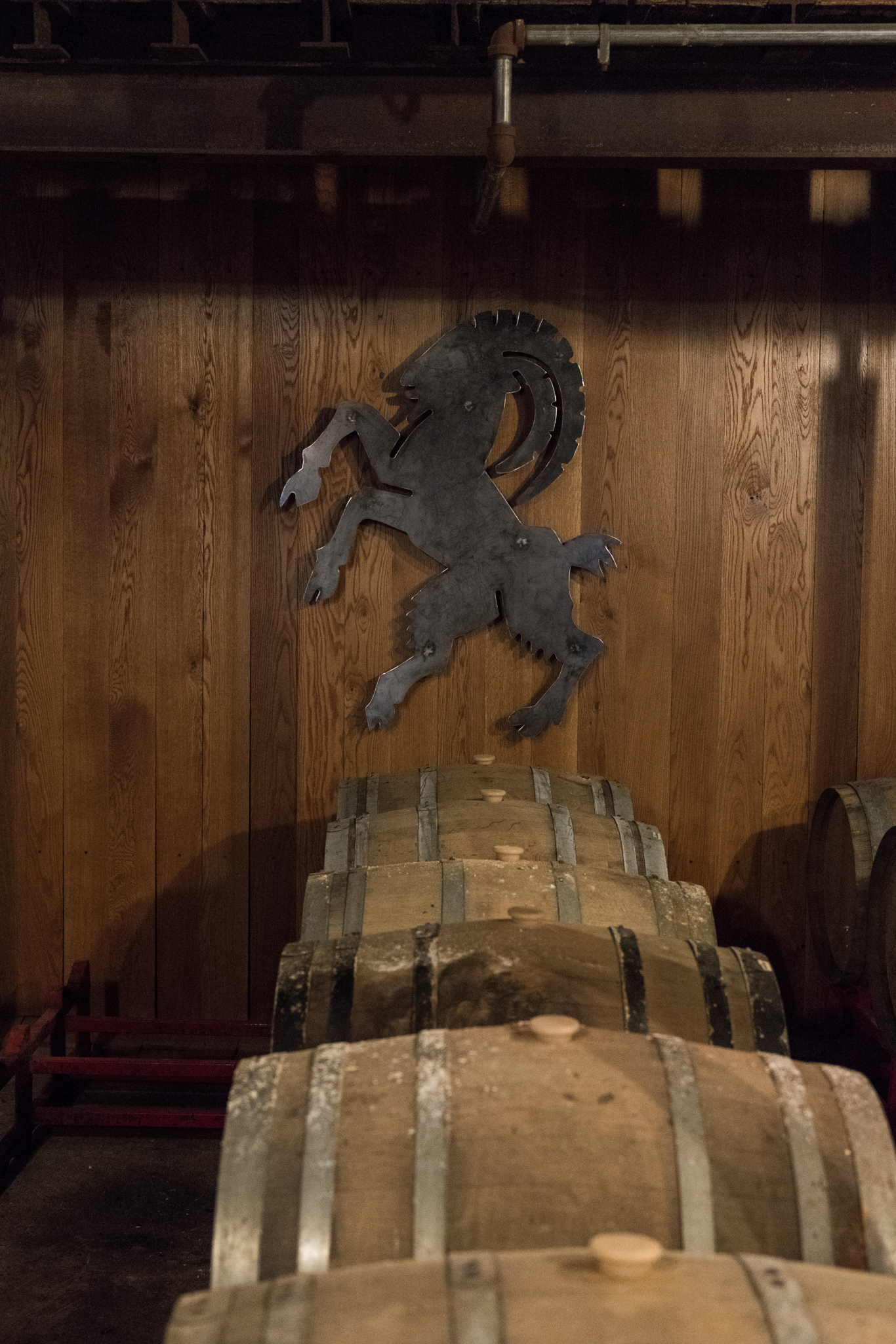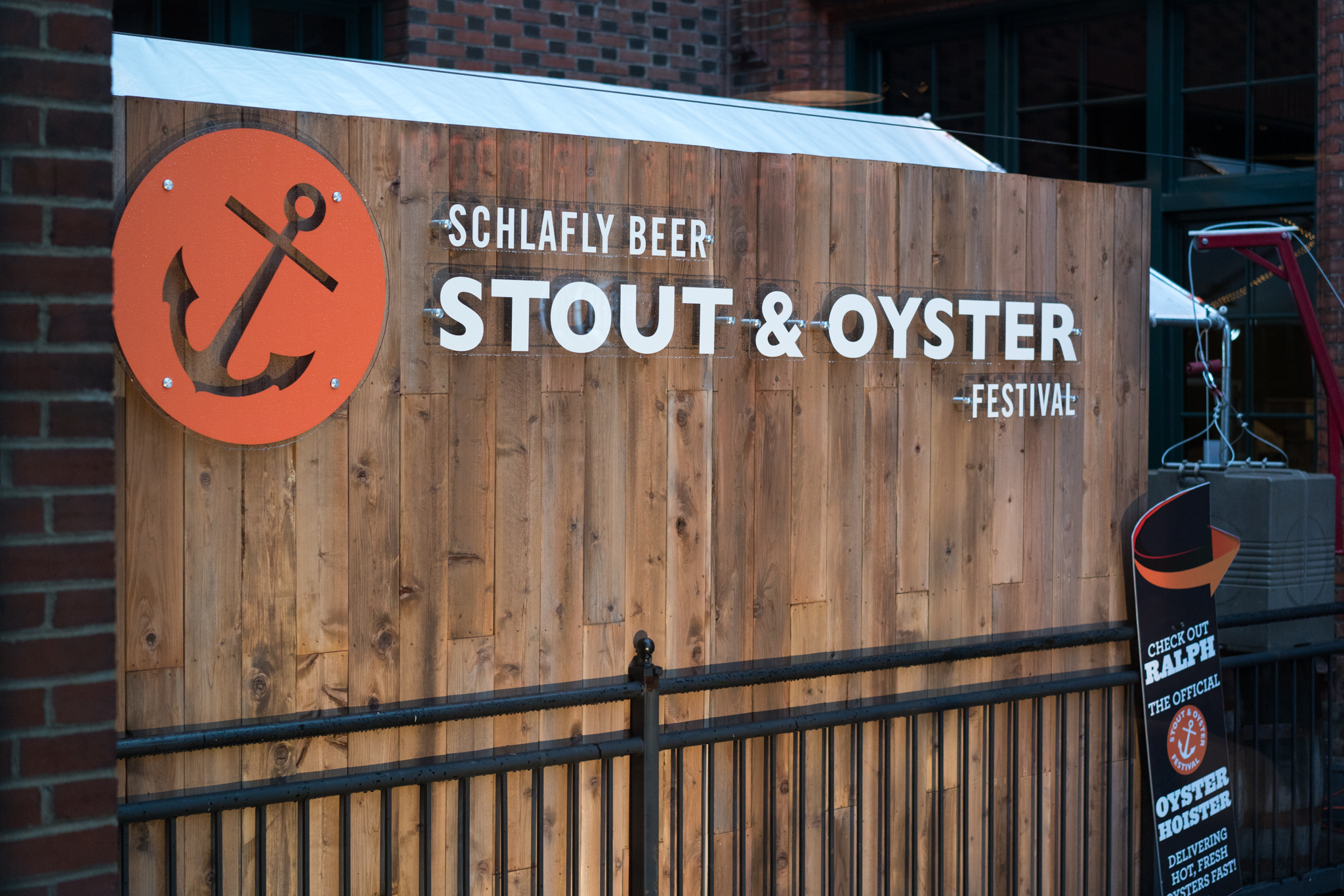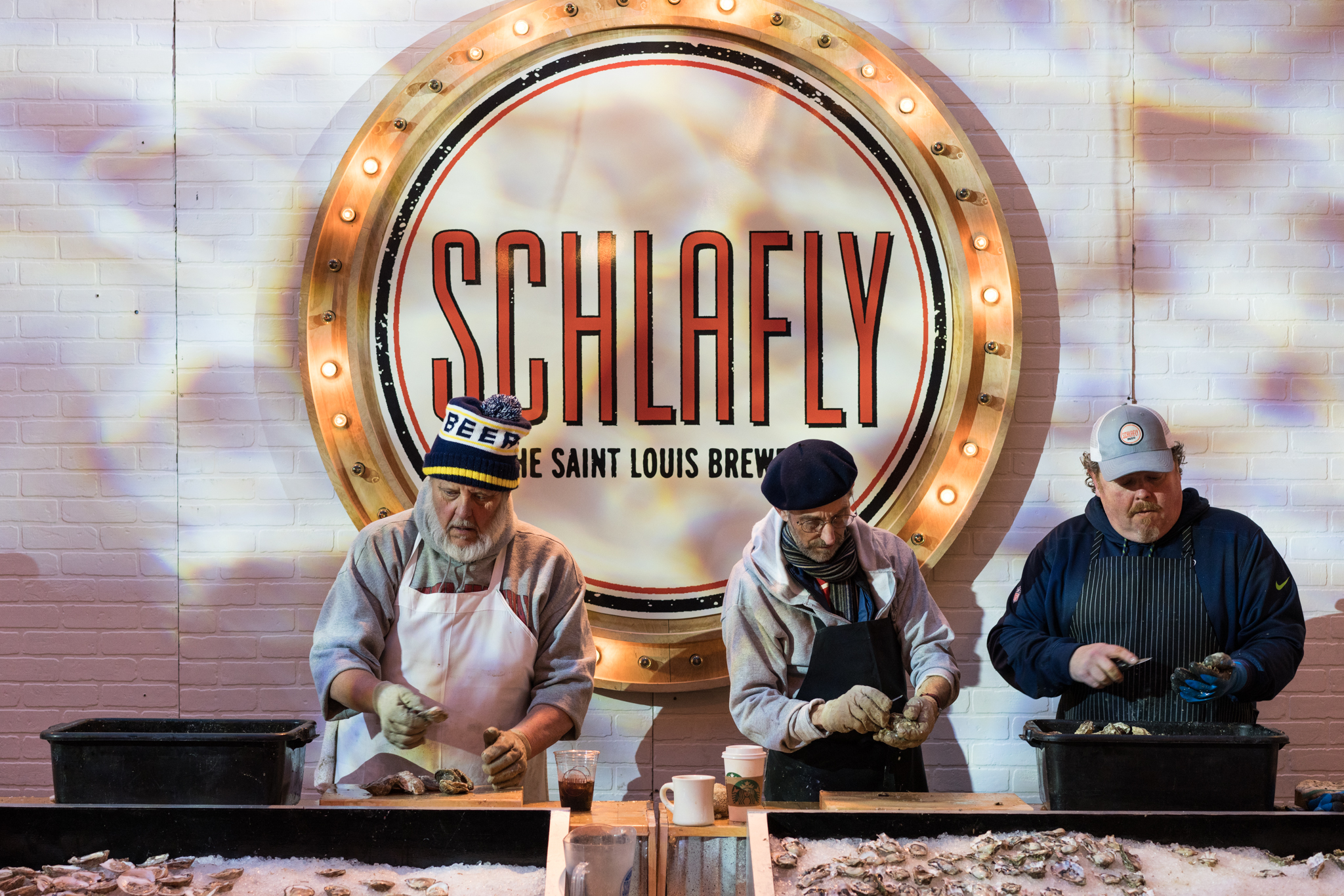This content was originally published by The Hop Review, a digital magazine that joined the Hop Culture family in March 2020.
This piece was written by Jack Muldowney.
ST. LOUIS, MO
INTERVIEWED MARCH 24, 2018
AT THE SCHLAFLY TAPROOM – ST. LOUIS, MO
When you consider the history of Midwest–or American, for that matter–brewing tradition, it’s cities like Milwaukee and St. Louis that set the standard. Housing dozens of massive old-world-influenced breweries that towered above German, Czech and Austrian neighborhoods alike, these metropolises were the heartbeat of American brewing until Prohibition took its toll. Today, those pioneer brewers’ legacies are still visible in the form of 100+ year-old red brick brewhouses, as well in the cities’ adopted beer styles of choice, mostly influenced by the traditional German lager.
It wasn’t until 1991, that a then-meager brewpub opened in a century old, decades abandoned building, up the road from Anheuser-Busch (referred to locally simply as ‘The Brewery’). It was the first new brewery in St. Louis in decades. Founded a few year earlier by Thomas Schlafly and Dan Kopman, The Saint Louis Brewery found its footing after bringing in brewer Stephen Hale in time to open its brewpub doors, that Schlafly Beer as we know it began to take shape. While Hale admits to not being a ‘hop-head’, it was under his leadership and thanks to his colorful past, that the microbrewery began to push the boundaries of what a beer recipe could be–thus providing St. Louis a take on beer that was a welcome change, after decades of the fizzy yellow commodity.
Recently, we were able to spend a weekend with Hale, as we followed him through Schalfly’s two brewing locations, their Stout & Oyster Festival, and around St. Louis as we learned a bit more about his unique career path (chimney sweeps and scuba diving make the resume), his past with Schlafly, his life after brewing, as well as what it means to be a ‘craft brewery’ in the shadow of the world’s largest macro.
In ’91 you came to Missouri from Maine? What brought you to St. Louis?
A college classmate, who was a friend and fellow homebrewer.
Homebrewing is a common thread when we talk to brewers, of course. Had you been homebrewing since college?
I started when I was 19 during my year off from college. [Schlafly Co-founder] Dan Kopman and I brewed together often. He went the professional route after college. He basically created his own Watson Fellowship and started brewing with Young’s Brewery in London and a few others. Then he started an import business to bring British beers into the United States, and we really got to know beer culture in the late 80s.
When people talk about ‘craft beer’ at that time, it was typically referring to imports…
For craft beer it would have been the likes of Sierra Nevada, Anchor… The word ‘craft’ didn’t exist in the brewing industry then. You were a microbrewery if you were a shipping brewery and you were a brewpub if you had a restaurant. The quick way of looking at it was: burgers or bottles.
And when you wanted a ‘premium’ beer back then, you’d buy an import, yes?
That was really the only choice until the mid-80s.
Did that influence how you first began to brew?
Definitely. Charlie Papazian [American Homebrewers Association founder, and former Brewers Association president] was a huge resource then, too. Homebrewers were able to get a lot of information from the AHA and their Zymurgy Magazine. There were not as many books on brewing as there are now. And the ingredients were good, but not great. That was a big difference.
“The word ‘craft’ didn’t exist in the brewing industry then. You were a microbrewery if you were a shipping brewery and you were a brewpub if you had a restaurant. The quick way of looking at it was: burgers or bottles.
”
We’ve heard you also had some interesting jobs prior to your role at Schlafly, is that true?
After college and my liberal arts degree majoring in Latin and Greek, I then taught Latin and Englishat a private school in Maine for two years. During my year off from college, I also became a chimney sweep.
How does that happen, the latter part?
Your uncle jokingly sends you a clip-out from a magazine saying, “You’re not going back to school, be a chimney sweep!” I looked at the ad and thought it was funny, but couldn’t afford the equipment. I had swept chimneys before, with some masons on an island in Maine where we grew up in the summer. So I went back to the ad and thought, I already knew how to do it, and maybe I could make enough money to cover the equipment costs early on. So I ordered the equipment and became a chimney sweep. Top hat, tails…everything.
How long did that last?
I would say it lasts still, today. Come springtime, I still have to clean my chimney! So, yea–chimney sweep, then back to school, still homebrewing…then I graduate, English and Latin teacher in Maine–from there, after some minor jobs, I jumped on a lobster boat in the the winter to harvest sea urchins for the sushi industry.
Whew, winter diving? You drew the short straw!
I drew the long straw, that was cool stuff!
Even in the winter?
We had drysuits with thermals of course. The truly shitty days were when you had a bad hangover, the weather was bad, the urchins were scant, and your drysuit leaked. Usually those all didn’t happen together, but when several of them did, that was no fun. And when weather was good, you made a lot of money.
So you somehow made it to Missouri after all that.
Yes, after 4 years of that, Dan Kopman–business partner of Tom Schlafly here at the St. Louis Brewery Inc.–called and asked if I wanted to help open a brewery. That was early 90s.
Had you been to St. Louis before?
I had never been here. Ohio was the ‘Midwest’ as far as I was concerned as a Yankee. This was way out. I thought about the proposal and had wanted to get into commercial brewing. So I did a brew day at Gritty McDuff’s in Portland, Maine–one of the older brewpubs in the country–and then moved out here in October that year. And we opened in late December ’91.
I took a short break to help open the Casco Bay Brewing Company back in Portland and that lasted most of that summer. But then the Head Brewer job opened up here and I accepted the offer and moved back. Plus, I left something pretty important out here, and thought I better come back for it… My now wife, Sara, was brewing here at the time.
You two met working at Schlafly?
Through Schlafly, yes. I worked a couple shifts bartending to supplement income and I remember when she, her boyfriend, and a friend walked in the front door one day. They just looked like really cool people. They found space at the bar and became regular customers–and they were fellow scuba divers.
Where do you scuba in Missouri?
They would take trips to Arkansas for the White River. Not quite like the Atlantic. It was years before I ever saw coral or brightly colored fish in Florida. All my diving was in Maine–rich in marine life, tons to see–but a little greener and a little darker.
Quite the colorful past.
It is different. Tune of a different drummer maybe.
“Dave was a stubborn German, but he was fun to work with. We learned a lot from him. We learned balance–he really instructed us on how to make a beer with great balance.
”
So then, here you are, brewing in this historic downtown St. Louis location where Schlafly is housed. What was the brewery’s approach to styles early on?
It was actually a very interesting beginning because Dan [Kopman]’s experience and background was in English brewing, at Young’s. And the Head Brewer he hired, Dave Miller, was very much a German brewer. He knew how to brew, but he focused on lagers and Dan focused on ales. Dan said he wanted our flagship beer to be an English pale ale. And Dave said, ‘Fine.’ Actually, I think the story went–Dave wanted to brew his pilsner, and Dan said he could brew his pilsner, but then he had to also brew Dave’s English pale ale…
Dave was a stubborn German, but he was fun to work with. We learned a lot from him. We learned balance–he really instructed us on how to make a beer with great balance. Some may have accused him of making boring beers–and brewers really like to push the envelope now–but they are coming back to the classic styles a lot. It’s full circle. I’m holding out for a real cask ale. The brightest, purest beer I ever consumed was a cask beer at Fuller’s in London. Whew, it was so good.
Do you do cask beer frequently?
We have two on tap right now, actually. Maybe not a classic English Pale or ESB, but they are beers from the cask.
Was Schlafly’s origin as a brewpub a product of that early 90’s scene?
Yes, that seemed like the thing to do. But, buying this building? They were talked into this building by the general contractor and a local rehabber. This building was abandoned for 20 years. And is now in the National Register for Historic Places.
Let’s talk about the Ibex Cellar. We’ve had so many fantastic beers from that series.
Those are typically beers that will have any contact with wood. They’re longer aged. The most recent, The Devil’s Farmhouse–beers like that, that take a long time to produce and are more expensive to produce because of wood-aging–those are from the Ibex Cellar.
Knowing the size of available space in this building, did you ever feel overwhelmed by the thought of expansion to fill the whole space?
It is kind of like putting the frog in cold water and turning the heat on. We opened with three tanks and realized we have this space to put one more… So, ‘Let’s add another tank.’ That was always the goal, Tom and Dan wanted to distribute, they didn’t want to run a full-on restaurant. The current model of many new breweries is brilliant, build your packaging brewery, make sure you have extra room to use eventually, and put in a good sized tasting room. There is good money to be made selling beer over the bar, and then have something people can eat.
Dan was a brewer and Tom was a local attorney and beer lover, so it was their talents combined. Tom was the checkbook, Dan had the experience–it was a great combination.
“I don’t think a day goes by without thinking about it [AB]. You know that it’s there, but I don’t think it hampers the creativity. We’re not asking permission–none of the breweries have ever asked them.
”
Has Schlafly been a continuation of balancing English and German styles?
Well, I remember the day, in the spring of ’95, when Sarah [Hale] was Assistant Brewer at the time… We sat down with Tom Schlafly and a calendar and listed our four or five year-round beers, and then the seasonal beers. And we realized that there were a lot of gaps in the calendar… So we definitely found some opportunities to experiment.
You mentioned before that you are not a hop head.
I am not. I like our IPA, I just don’t drink multiple pints of it.
Have you always leaned that way in your preferences?
I think I went through my IPA craze. Have people started to write about the death of IPA? Maybe not the death, I recant…the decline perhaps.
Who knows, you might be on to something, especially with the current push, away from bitterness overall…
We understand that you put over two decades of work on the brewing side at Schlafly before stepping away. What is your focus currently?
I’m approaching year five of not being on the production side. I finished my hands on cellar operations stuff and work now with the sales and marketing crew. That involves a lot of travel. I like getting out there and talking amongst folks.
“I like to think of myself as an equal opportunity imbiber.
”
There’re some fellow heavy hitters here in St. Louis: 4 Hands, Perennial, Urban Chestnut, Side Project… In fact, we heard today that the city won the USA Today vote as ‘Beer City USA…’
Yeah, well that’s kinda an interesting one. There are a heck of a lot of good cities for beer. As for local breweries though, one that maybe gets the most attention…Side Project. That has amped up things for a lot of people here, but they are not going to be available everywhere, either. You’re not going to find a 12-pack from them, but obviously that’s not their intention either. It’s exciting to see the hype around them, it’s good for everyone.
Has there ever been a feeling of being in the shadow of Anheuser-Busch? For you, or any of the other local brewers in Saint Louis.
I don’t think a day goes by without thinking about it. You know that it’s there, but I don’t think it hampers the creativity. We’re not asking permission–none of the breweries have ever asked them. The interesting twist is how they have woken up to what’s happening. They are all about market share, so what do they do? Eventually, if you can fight ’em, you join ’em. They’ve hosted many events at their space, they give away hops, the winner of one of their competitions gets to brew on their ‘RPB’ [Research Pilot Brewery]. They have realized, for as much vitriol as the homebrewing community has cast towards them, they have embraced them. They’re big, they have thick skin, so they have embraced the local community. There is no point in doing battle. Their brewers and many higher-ups have come through our doors here to see what we are all about.
When you are not drinking Schlafly, what are you drinking?
At home, it’s a Manhattan in the winter and a gin and tonic in the summer. I like to think of myself as an equal opportunity imbiber! The one thing I don’t think I should drink, and keep teaching myself a lesson with again and again, is wine. I want it to be ok with pasta, but I will quote a West Coast brewer whose name I can not remember when asked a similar question, “Well my elbow moves just as often, so if the liquid in there was 5%, but now it’s 14%, you are more than doubling my alcohol intake.” That’s why beer drinkers don’t typically drink wine…
Unless you’re a slow beer drinker.
–THR–


–––
Photography by Ben Macri for The Hop Review.
Thank you to Schlafly for hosting us for the festival weekend, and to Stephen Hale for being such a gracious and candid host. If you are in St. Louis, be sure to pay a visit to the brewery’s original downtown Taproom in the historic Lambert Building, or at their Bottleworks brewpub location, located in an old Kroger in the Maplewood neighborhood.

































